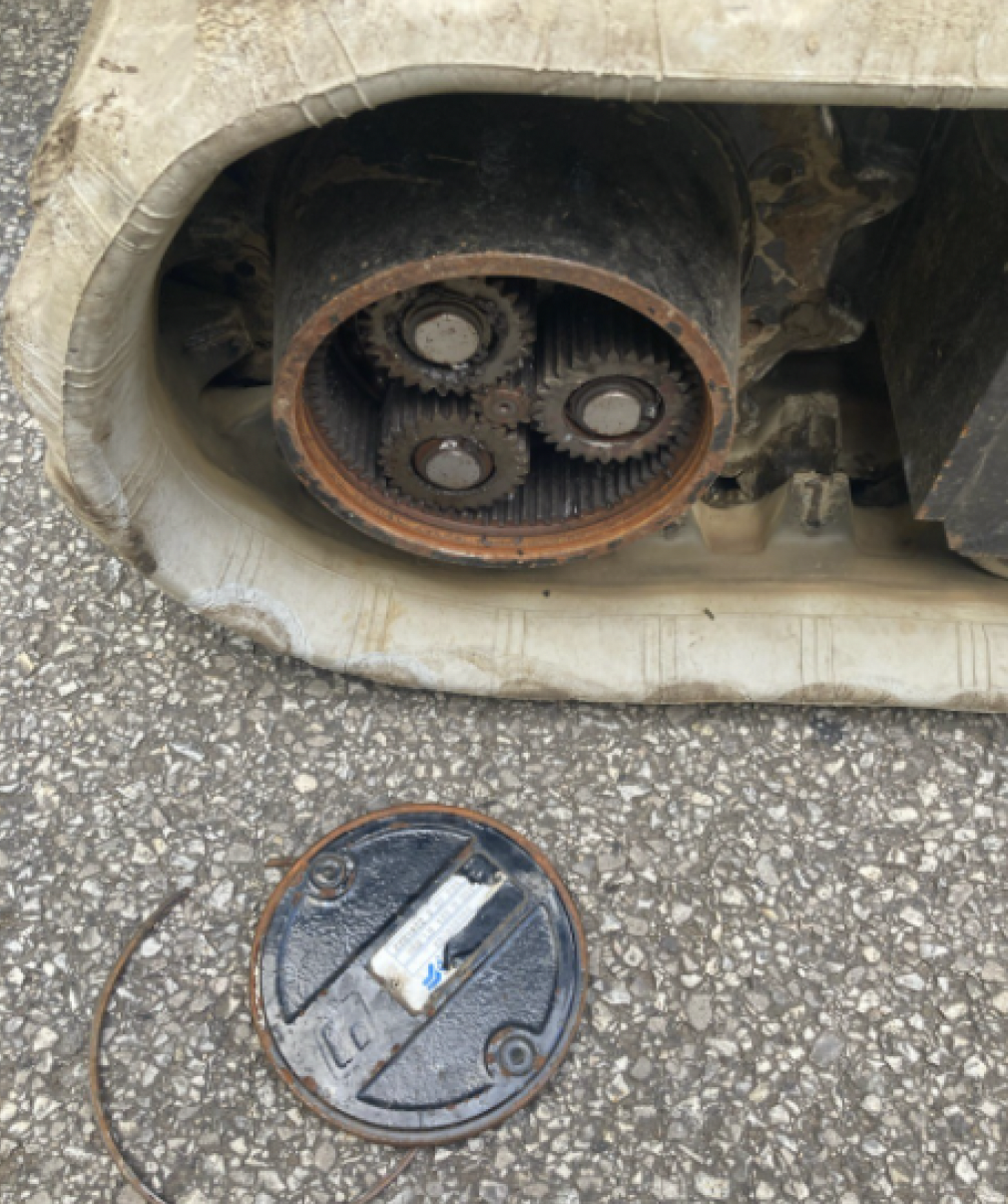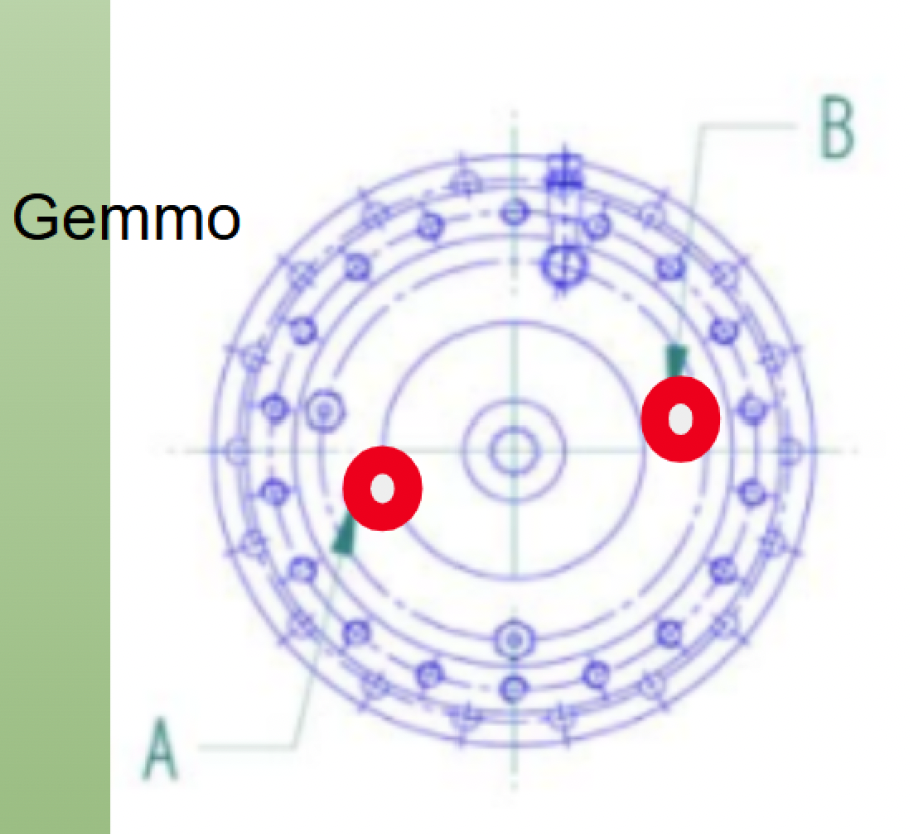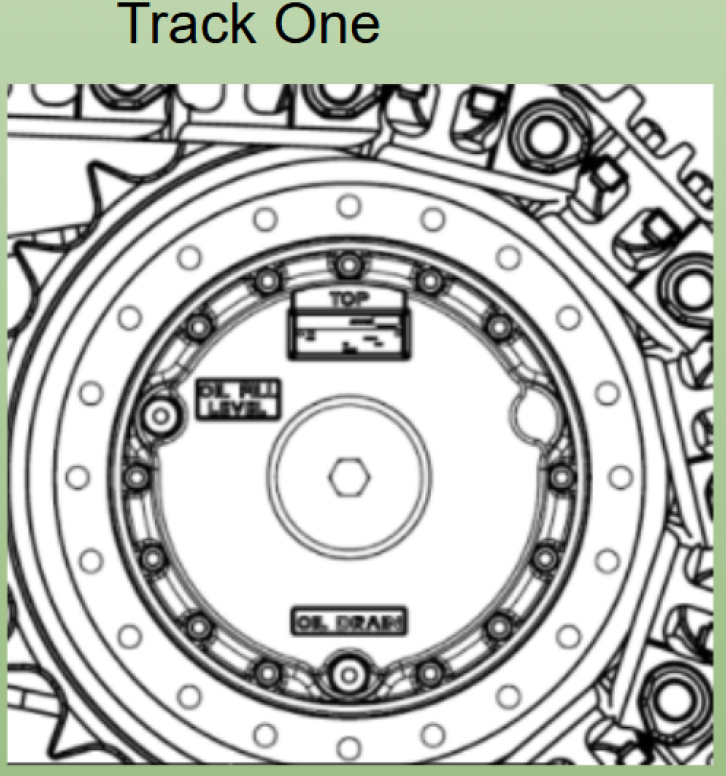The Hidden Cost of Skipping Final Drive Inspections
Why Final Drive Inspections Matter More Than You Think
Every year, machines suffer preventable damage due to one overlooked detail: final drive oil condition and level. During annual and frequent inspections, checking and maintaining this component can mean the difference between reliable operation and thousands of dollars in repairs.

The machine pictured above is an example of what happens when oil levels go unchecked. Although it showed no visible leaks, the final drive had completely lost its oil. The result? A full replacement was required - a costly, time consuming fix that could have been avoided with a few minutes of preventive maintenance.
Understanding the Final Drive System
The final drive is the component that transfers torque from your hydraulic drive motor to the tracks. It’s exposed to intense mechanical stress and heat. That’s why maintaining proper lubrication is essential, the oil inside acts as both a coolant and a barrier against friction and wear.
However, washing, weather exposure, or dust and dirt can cause oil to escape unnoticed. Without sufficient oil, the internal gears and bearings overheat, wear excessively, or rust, often destroying the entire drive assembly.
Frequency of Checks and Fluid Replacement
The engine usually gets all the love and attention, it’s the heartbeat of the machine. You can hear it and see it running, so most people tend to stay on top of engine oil changes and maintenance. Some even bundle an engine PM with other services like inspections.
However, the drives deserve attention too and can sometimes be overlooked during routine maintenance.
The MFG recommends the following service intervals:
- Oil level and condition: Check at a minimum every 120 hours or monthly
- Oil replacement: Change every 1,500 hours or annually
How to Properly Check and Fill the Oil
For Gemmo Final Drives

- Position the hub as shown in the diagram (see image above).
- Remove the top port labeled “B” and fill the drive until oil starts to flow out of port “A.”
- This ensures the hub is filled to the correct level across both cavities.
For Track One Final Drives

- Locate the plug labeled “DRAIN” — this should be at the bottom position.
- Fill through the port labeled “FILL” until oil begins to overflow.
- Replace all plugs securely to avoid contamination or seepage.
These steps guarantee that the drive’s internal gears and bearings stay properly lubricated, even under heavy use.
Lesson
It’s easy to underestimate how much a minor leak can affect equipment. Final drives are built tough, but like any other component they’re not immune to neglect. The unit featured in the beginning of this article lost all its oil because the issue went unnoticed or ignored until it was too late.
This incident highlights a key part of maintenance: visible external condition doesn’t always reflect internal condition. Always verify oil levels and conditions.
Final drives might be out of sight, but they should never be out of mind. Whether you’re maintaining Gemmo or Track One systems, proper oil checks are some of the easiest and most cost effective ways to extend a machine’s life.
Gallery






